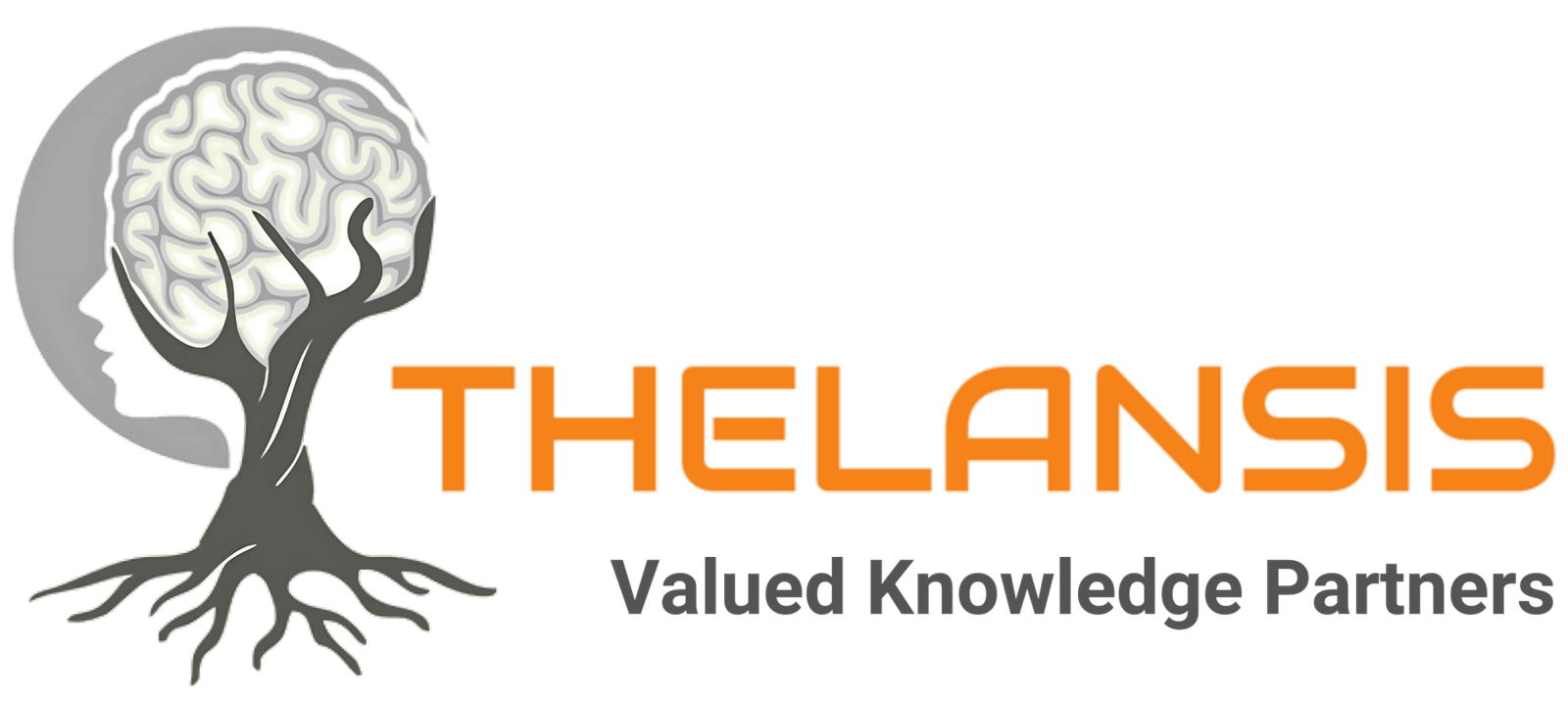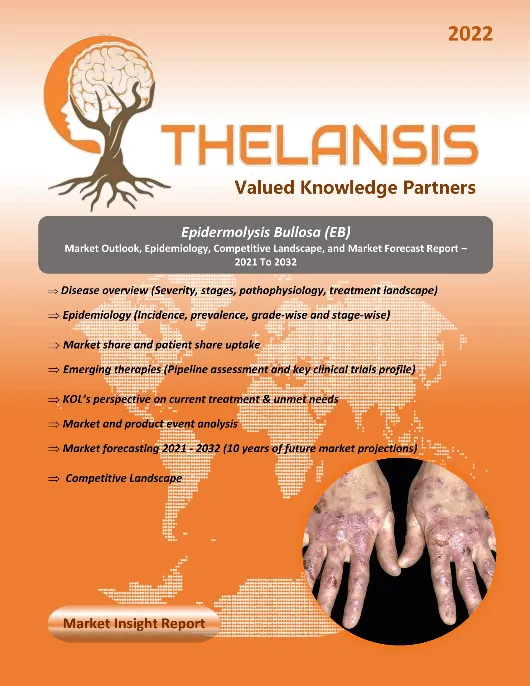Spinal Muscular Atrophy (SMA) – Emerging Therapy, with Unmet Needs and TPP Insights Report – 2024 To 2034
- Published Date : December 3, 2024
- Updated On : September 11, 2025
- Pages : 58
Spinal Muscular Atrophy (SMA) Emerging Therapy
Thelansis’s “Spinal Muscular Atrophy (SMA) Emerging Therapy, with Unmet Needs and TPP Insights Report – 2024 To 2034″ provides a comprehensive analysis of the emerging competitive landscape, unmet needs, target product profiles (TPPs), trial designs, and KOL insights on key emerging therapies and key drug development opportunities in the indication.
Spinal Muscular Atrophy (SMA) Overview
Spinal muscular atrophy (SMA) is a genetic neuromuscular disorder primarily characterized by the progressive, irreversible loss and degeneration of alpha motor neurons in the anterior horn of the spinal cord and brain stem, leading to profound, typically symmetric, muscle weakness and atrophy, most severely affecting the proximal muscles and eventually causing paralysis in severe cases. This condition is overwhelmingly caused by mutations or deletions in the Survival Motor Neuron 1 (SMN1) gene, which results in a deficiency of the critical SMN protein required for motor neuron health and function. The clinical severity of SMA, historically classified into subtypes (e.g., Type I, II, III, IV), exists along a continuous spectrum that is mainly influenced by the number of copies of the SMN2 “backup gene,” with higher copy numbers generally correlating with increased functional SMN protein and a milder, later-onset phenotype, though modern treatment using SMN-modifying therapies (e.g., antisense oligonucleotides, gene therapy) has revolutionized prognosis by directly addressing the underlying protein deficiency.
Geography coverage:
G8 (United States, EU5 [France, Germany, Italy, Spain, U.K.], Japan, and China)
Insights driven by surveys* with physician / key opinion leaders:
- Survey findings are corroborated and enriched by insights from interviews with leading KOLs
*Survey is customized based on client requirements
Deliverables format:
- PowerPoint presentation
- MS Excel
Key business questions answered:
- Detailed emerging competitive landscape
- Pipeline analysis
- Target patients for emerging therapies
- Key companies
- Key mechanism of actions
- Launch date estimates, etc.
- Clinical trial landscape analysis
- Target patient segments
- Trial endpoints
- Trial design
- Recruitment criteria, etc.
- Unmet Needs and Opportunities
- Performance of key current therapies
- Top areas of unmet needs
- Opportunity sizing for key unmet needs
- Target Product Profiles
- Attributes and levels
- Physician likelihood of prescribing
- Expected patient shares
- KOL insights on key emerging therapies
- Level of awareness
- Expected use / line of therapy
- Extent to fulfil key unmet needs
- KOL quotes
Spinal Muscular Atrophy (SMA) Emerging Therapy
Thelansis’s “Spinal Muscular Atrophy (SMA) Emerging Therapy, with Unmet Needs and TPP Insights Report – 2024 To 2034″ provides a comprehensive analysis of the emerging competitive landscape, unmet needs, target product profiles (TPPs), trial designs, and KOL insights on key emerging therapies and key drug development opportunities in the indication.
Spinal Muscular Atrophy (SMA) Overview
Spinal muscular atrophy (SMA) is a genetic neuromuscular disorder primarily characterized by the progressive, irreversible loss and degeneration of alpha motor neurons in the anterior horn of the spinal cord and brain stem, leading to profound, typically symmetric, muscle weakness and atrophy, most severely affecting the proximal muscles and eventually causing paralysis in severe cases. This condition is overwhelmingly caused by mutations or deletions in the Survival Motor Neuron 1 (SMN1) gene, which results in a deficiency of the critical SMN protein required for motor neuron health and function. The clinical severity of SMA, historically classified into subtypes (e.g., Type I, II, III, IV), exists along a continuous spectrum that is mainly influenced by the number of copies of the SMN2 “backup gene,” with higher copy numbers generally correlating with increased functional SMN protein and a milder, later-onset phenotype, though modern treatment using SMN-modifying therapies (e.g., antisense oligonucleotides, gene therapy) has revolutionized prognosis by directly addressing the underlying protein deficiency.
Geography coverage:
G8 (United States, EU5 [France, Germany, Italy, Spain, U.K.], Japan, and China)
Insights driven by surveys* with physician / key opinion leaders:
- Survey findings are corroborated and enriched by insights from interviews with leading KOLs
*Survey is customized based on client requirements
Deliverables format:
- PowerPoint presentation
- MS Excel
Key business questions answered:
- Detailed emerging competitive landscape
- Pipeline analysis
- Target patients for emerging therapies
- Key companies
- Key mechanism of actions
- Launch date estimates, etc.
- Clinical trial landscape analysis
- Target patient segments
- Trial endpoints
- Trial design
- Recruitment criteria, etc.
- Unmet Needs and Opportunities
- Performance of key current therapies
- Top areas of unmet needs
- Opportunity sizing for key unmet needs
- Target Product Profiles
- Attributes and levels
- Physician likelihood of prescribing
- Expected patient shares
- KOL insights on key emerging therapies
- Level of awareness
- Expected use / line of therapy
- Extent to fulfil key unmet needs
- KOL quotes
1. Key Findings and Analyst Commentary
- Key trends: market snapshots, SWOT analysis, commercial benefits and risk,etc.
2. Disease Context
- Disease definition, classification, etiology and pathophysiology, drug targets,etc.
3. Epidemiology
- Key takeaways
- Incidence / Prevalence
- Diagnosed and Drug-Treated populations
- Comorbidities
- Other relevant patient segments
4. Market Size and Forecast
- Key takeaways
- Market drivers and constraints
- Drug-class specific trends
- Country-specific trends
5. Competitive Landscape
- Current therapies
- Key takeaways
- Dx and Tx journey/algorithm
- Key current therapies – profiles and KOL insights
- Emerging therapies
- Key takeaways
- Notable late-phase emerging therapies – profiles, launch expectations, KOL insights
- Notable early-phase pipeline
6. Unmet Need and TPP Analysis
- Top unmet needs and future attainment by emerging therapies
- TPP analysis and KOL expectations
7. Regulatory and Reimbursement Environments (by country and payer insights)
8. Appendix (e.g., bibliography, methodology)
Table of contents (TOC)
1. Key Findings and Analyst Commentary
- Key trends: market snapshots, SWOT analysis, commercial benefits and risk,etc.
2. Disease Context
- Disease definition, classification, etiology and pathophysiology, drug targets,etc.
3. Epidemiology
- Key takeaways
- Incidence / Prevalence
- Diagnosed and Drug-Treated populations
- Comorbidities
- Other relevant patient segments
4. Market Size and Forecast
- Key takeaways
- Market drivers and constraints
- Drug-class specific trends
- Country-specific trends
5. Competitive Landscape
- Current therapies
- Key takeaways
- Dx and Tx journey/algorithm
- Key current therapies – profiles and KOL insights
- Emerging therapies
- Key takeaways
- Notable late-phase emerging therapies – profiles, launch expectations, KOL insights
- Notable early-phase pipeline
6. Unmet Need and TPP Analysis
- Top unmet needs and future attainment by emerging therapies
- TPP analysis and KOL expectations
7. Regulatory and Reimbursement Environments (by country and payer insights)
8. Appendix (e.g., bibliography, methodology)


